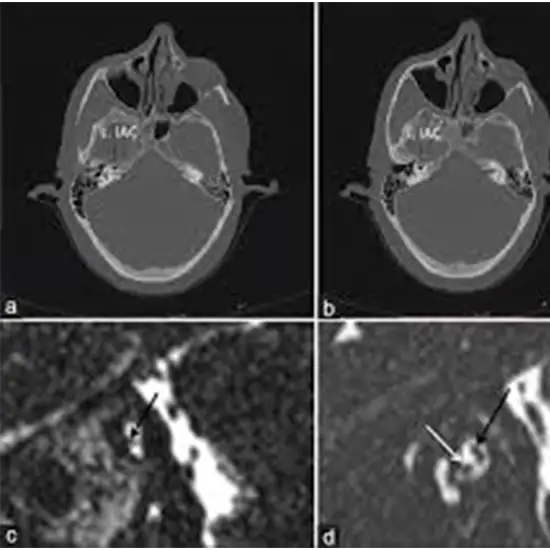
A computed tomography scan (CT or CAT) of the internal auditory canal, also known as cross-sectional imaging, uses a rotating X-ray beam to examine different levels, or slices, of the skull bones leading from the ear. The radiologist can assess skull bones for injury, infection, fluid levels, and abnormalities by looking at these slices.
A radiology technologist or nurse will ask you a few questions about your medical history.
Please wear comfortable clothing and leave your jewellery and valuables at home. Because this is a head scan, anything that can interfere with the scan, such as dentures, false teeth or implants, earrings, or hairpins, should be left at home.
If contrast dye is used, it will be administered through your IV.
During the injection, you may feel warm all over your body and have a metallic taste in your mouth. This is typical.
Please notify the technologist immediately if you experience any itching, sneezing, nasal congestion, scratchy throat, or swelling of your face.
This procedure is carried out in two stages.
The head is held in a holder in both positions, and the patient must remain very still.
Patients in the first position lie on their backs with their arms at their sides.
The patient lies on their stomach in the second position, with their head resting on their chin. The arms are placed at the sides.
The scanner only covers the patient's head, and the scanner is open at the back and front, allowing the patient to see out.
This procedure typically takes about 30 minutes.
You will have no restrictions after this procedure. You may eat and drive normally.
If you had a contrast dye injection, you should drink six to eight glasses of water to flush it out of your system.
An imaging physician who specialises in CT scan interpretation will read your study.
A CT scan of Internal Auditory Canal Testis typically performed in a hospital's radiology department or an outpatient imaging facility. So, for the best services and reliable results, schedule your test at Ganesh Diagnostic in Yamuna Vihar.